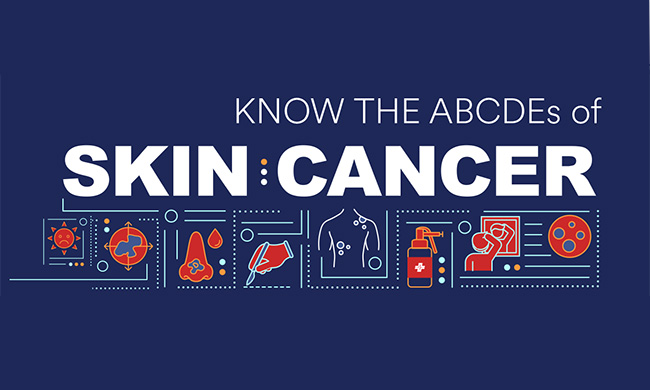
Understanding the ABCDEs of Skin Cancer Detection
Skin cancer is one of the most common types of cancer worldwide, but when detected early, it’s often highly treatable. To aid in early detection, Fast Pace Dermatology providers use a helpful mnemonic known as the ABCDEs to help identify potential signs of skin cancer: Asymmetry, Border irregularity, Color variation, Diameter, and Evolving characteristics. In this article, we’ll delve into each of these factors and discuss how Fast Pace Dermatology can assist in skin cancer detection and potential treatment strategies.
A – Asymmetry
The first letter in the ABCDEs stands for asymmetry. Normal moles are typically symmetrical, meaning if you were to draw a line through the center, both halves would look the same. However, asymmetrical moles, where one half looks different from the other, could be a warning sign of melanoma, one of the most deadly forms of skin cancer.
B – Border Irregularity
Border irregularity refers to the edges of a mole or lesion. Normal moles typically have smooth, well-defined borders. In contrast, melanomas often have irregular, jagged, or poorly defined borders. If you notice any irregularities in the borders of a mole or lesion, it’s essential to have it evaluated by a dermatologist promptly.
C – Color Variation
Color variation is another important factor to consider when examining moles or lesions. While normal moles are usually a single shade of brown, melanomas may show various colors, including brown, black, red, white, or blue. A dermatologist should evaluate any mole or lesion that displays multiple colors or unusual color combinations.
D – Diameter
The diameter of a mole or lesion is also a significant indicator of potential skin cancer. While melanomas can be smaller than the eraser of a pencil, they typically grow larger than benign moles. Generally, any mole or lesion larger than 6 millimeters (about the size of a pencil eraser) should be evaluated by a dermatologist.
E – Evolving Characteristics
Lastly, evolving characteristics refer to any changes in size, shape, color, or texture of a mole or lesion over time. Regularly monitoring your skin for any new or evolving spots is essential for early detection of skin cancer. If you notice any changes in a mole or lesion, such as itching, bleeding, or rapid growth, it’s crucial to seek medical attention promptly.
How Fast Pace Dermatology Can Help
At Fast Pace Dermatology, we offer comprehensive skin health assessments and skin cancer screenings. Our dermatology providers are trained to help recognize the early signs of skin cancer and provide strategies and potential treatment options. Whether you need a routine skin exam or have concerns about a specific mole or lesion, our team is here to provide personalized care tailored to your needs.
In addition to skin cancer screenings, Fast Pace Dermatology offers a wide range of dermatological services, including acne treatment, eczema management, and cosmetic procedures. With convenient locations and flexible appointment options, we make it easy for you to prioritize your skin health.
By staying vigilant and following the ABCDEs of skin cancer detection, along with regular skin cancer screenings at Fast Pace Dermatology, you can take proactive steps towards maintaining healthy, radiant skin for years to come.
Book your visit today: https://fastpacehealth.com/service/dermatology-care/
American Academy of Dermatology. (n.d.). What to Look for: ABCDEs of melanoma. American Academy of Dermatology Association. https://www.aad.org/public/diseases/skin-cancer/find/at-risk/abcdes
Related Resources


